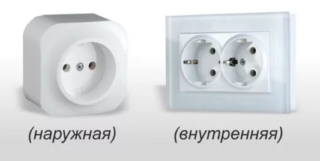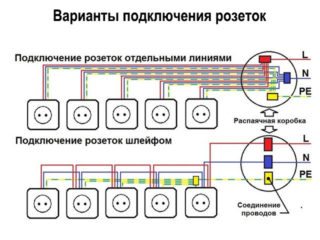Situations when it is required to change the position of an outlet built into the wall or openly placed on its surface are not so rare in everyday practice. They arise for a variety of reasons, explained by a coincidence. Most often, transferring an outlet in an apartment is a more complicated procedure than it seems at first glance.
Reasons for transfer
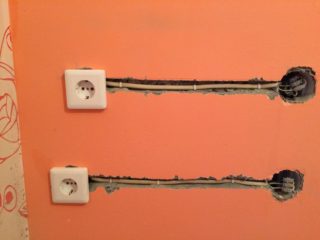
The main reasons forcing to change the location of the outlet in a private house or communal apartment are:
- Planning to put a sample of new furniture or newly purchased household appliances (an electric stove, for example) near a section of a wall with an outlet on it.
- The desire to lengthen the lead wire or shorten it by some amount.
- Carrying out major repairs related to the decoration of the walls in the premises.
- Changing the type of installation of the socket product from a hidden method to an open placement or vice versa.
There are several options for transferring an outlet in an apartment, which differ in the methods of their installation within the serviced premises. When placed open (on a socket), the extension wire is laid over the wall surface. In the case of the hidden location of the product, you will have to deal with chipping - making a special groove in the plaster or concrete, into which the expandable wire is subsequently laid.
PUE requirements and safety measures
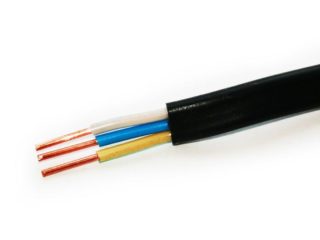
Before moving the outlet from one place to another or changing the method of its fastening, you will need to familiarize yourself with the provisions of the PUE concerning the features of these procedures. According to these documents, it is allowed to transfer socket products in compliance with the following rules:
- To lengthen the wiring, it is recommended to use a three-core power cable of VVGng brand with a conductor cross-section of at least 1.5 mm2.
- It is recommended to install a junction box at the junction (with an open gasket, it is allowed to do without it).
- The sockets are allowed to be mounted at a height of about 30-50 centimeters from the floor, the maximum permissible level is up to one meter.
- Some of the special types of products can be installed in special skirting boards with cable channels made of non-combustible plastic materials.
With the upper connection of electrical wires, it is possible to place standard products at a height of up to 1.5 meters.
- Before moving the outlet to another location, disconnect the line circuit breaker through which high voltage is supplied to this line.
- Then you need to make sure once again that there are no 220 (380) Volts on the phase contact, for which you will have to use an indicator screwdriver.
- Before starting work on extending the line, measures are taken to exclude the possibility of accidental activation of the circuit breaker.For this, a warning sign is posted on its body.
According to the PUE, the adoption of special measures to protect a person from electric shock is mandatory not only in production, but also in domestic conditions.
Required tools and materials
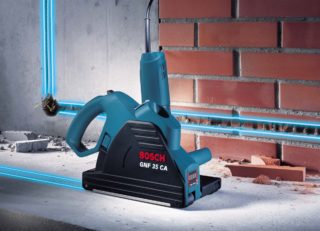
If it is necessary to move an outlet placed openly on a fiberboard wall, for example, from a tool you will need side cutters, a screwdriver to disassemble it and a drill with a "crown" type attachment. The first two positions are needed for disassembling the outlet itself and for preparing the extension leads. An electric tool will be required in order to drill a hole in a decorative coating (plasterboard, for example) in a new place with a diameter corresponding to the size of the outlet. From the material for work you need to prepare:
- A piece of plastic cable duct.
- A piece of 3-core wire of the desired length, corresponding to the distance to the new location.
- Synthetic glue or a set of screws for fixing the plastic blank on the wall.
- A set of electrical connectors that ensure reliable contact of old wires with new sections.
Before lengthening the line of the outlet in the walls of a concrete monolith, you will have to stock up on a special tool called a wall chaser. If you cannot get it or it is too expensive, you can use a conventional grinder, through which a groove is cut in the wall.
If there is no grinder, it remains to resort to the old "old-fashioned" method, which consists in using a hammer and chisel. Due to the laboriousness of the chasing operation, the method is realizable only with a small length of the line to be extended.
Features of transfer in houses of various buildings
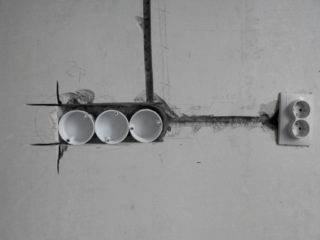
Differences in the methods of lengthening or shortening the wiring supplied to the outlet are manifested mainly in the material of its walls. On this basis, city houses are divided into panel-type buildings, which are modular structures made of standard reinforced concrete slabs and brick buildings. From a transfer point of view, walls are of particular importance, which can be:
- Pure concrete surfaces covered with wallpaper, for example.
- Finished under plaster or plasterboard.
- With a decorative coating such as fiberboard.
For each of the options for the state of the walls, a different way of laying cable cores is suitable. In the case of concrete and plastered surfaces, if it is necessary to lengthen the electrical wiring, it will be necessary to make grooves in them, into which an additional piece of cable is then laid.
The correct approach to routing an extension cord with decorative finishes involves routing it under the finishing material. A hole is drilled in the new place along the diameter of the portable socket. The current regulations do not prohibit the external laying directly on the decorative material, which is sometimes done if you want to arrange the wiring in the "retro" style.
Ways to connect wires
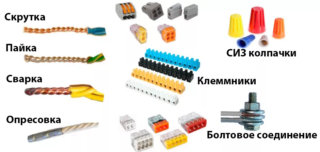
Any electrical connection between wires supplying power to a switch or outlet can be made in the following standard ways:
- With special adapter screw terminals.
- By means of conventional stranding followed by welding.
- Fixation using plastic caps.
- Formation of the same twist, but with soldering.
- With the use of Wago branded terminal blocks.
When choosing a specific connection method, first of all, it is necessary to take into account the material of the wires. If they are made on the basis of different metals (copper and aluminum), the resulting compound should not have direct contact that can oxidize and break down over time. In this case, the first and last methods are suitable, in which the terminals act as an adapter.
Twisting is permissible only with homogeneous materials of the original and growing conductors.
Connection diagrams
- By forming a kind of loop, in which wires are laid from the previous installation site to a new point by simply building up the phase and earth buses.
- Laying a completely renewed line, starting from a linear machine and ending in the desired area of the wall in the kitchen, for example.
The first of these techniques is used at small distances from the new installation point from the old place, and the second - if the distance exceeds 5-7 meters.
The second option for laying will require capital work related to the preparation of a diagram of the future route, as well as the selection of the type of wire and the method of its wiring. But on the other hand, in this case, it is possible to do without an unwanted intermediate connection that can degrade the characteristics of the entire power supply system. If, nevertheless, an extension scheme is chosen, the following important points must be taken into account:
- To implement this option, it is best to use wires of the same material and with the same cross-section of conductors as that of the original cable supplied to the old place. This will improve the quality of the connections and do without special terminal blocks.
- The reliability of a loop from several parallel-connected outlets is very low compared to laying a new line.
- An accidental break at the very beginning will lead to a de-energization of the entire chain of outlets connected to it.
In accordance with the requirements of the PUE, extension is allowed to be used to connect powerful household electrical appliances such as electric stoves, refrigerators, microwave ovens and washing machines.
When choosing a connection diagram for an extension cord for a new outlet (s), one should proceed from the specific operating conditions of household equipment and the quality of the wall surfaces. Taking these factors into account allows you to successfully cope with the task and eliminate problems that often occur in electrical circuits.

